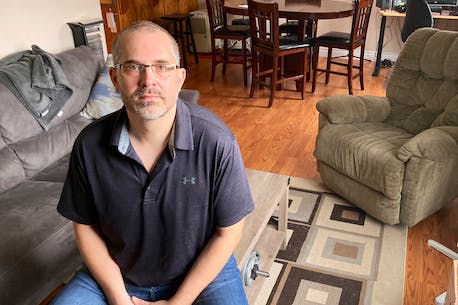GoNoGo! game teaches non-profits to build affordable housing

It’s a problem we see or hear about every day. Tents in the park, people living in cars, being evicted or worried they won’t make rent. This week we’re looking at the scope of the problem, how we got here, who can fix it and how.
HALIFAX, N.S. — No dungeons or dragons here — just affordable places for people to live.
A roomful of non-profit leaders, consultants, architects, government planners and officials recently gathered in Halifax for a role-playing game where the goal is to learn how to get affordable housing projects off the ground.
“It’s kind of like playing Monopoly a little bit but tweaked toward affordable housing and rather than playing on your own, you’re part of a group. Everybody loves to play a game,” said Graeme Hussey with Cahdco (Centretown Affordable Housing Development Corporation) out of Ottawa.
Cahdco is a non-profit real estate developer of affordable housing that started in the ’90s. Within the past year, staff there developed a role-playing game called GoNoGo! to teach people how to build a successful affordable housing project from the ground up. They’ve been bringing it to cities across the country. “Go no go” is developer speak for deciding to go ahead with a project or not.
It’s a competitive game
There are next to no training opportunities for non-profits to learn how to build affordable housing projects and HRM desperately needs the kind of deeply affordable and supportive housing non-profit entities can provide.
Costs are always more than the funding sources — government, fundraising, financing, etc. — and usually at that point, many non-profits give up, Hussey told the group. But he advised it’s important to go back to the concept and readjust. They could add more one-bedroom units instead of three because they will bring in more revenue, he suggested as one example.
It’s fitting to play a competitive game when it comes to non-profit affordable housing, Hussey said, because in reality, non-profits have to clamour for what’s available from the small amount of government funding.
How the game works
Participants are divided into project teams and given some typical development scenarios. Each person is given a role: architect, financial officer, construction manager, housing operator or municipal councillor, among others.
Teams have to put together a feasibility report, apply for grants, pitch the project and build the project with Legos to get an idea of its footprint.
They also have to pick up a strategy card, which impose random impacts to the project like construction costs going over budget.
The team that can successfully beat the others to win funding from the Canada Mortgage and Housing Corporation (CMHC), in this case played by Hussey, wins the game.

‘Non-profit sector needs to figure out how to compete’
The game “certainly gives you the opportunity to corroborate what you know, test some assumptions and figure out what you don’t know,” said Kevin Hooper with the United Way, who is working on developing community land trusts in HRM.
Local non-profits could stand to learn competition, he said.
“The fact is, the non-profit sector is at a disadvantage in this game with the private sector. Every opportunity that comes up, we’re really playing catch up with people who have been in it for a long time, have far more resources to work with,” Hooper said.
“I think the non-profit sector needs to figure out how to compete and competing is going to require co-ordination amongst the players in the non-profit sector. I hope we can get to a point where we can figure out how to work together more than we compete against each other because I think that’s the key to our success.”
The will is there. The knowledge? Not really
Coun. Waye Mason (Halifax South Downtown) passed on the opportunity to play a municipal councillor. Instead, he said he decided to take the “finance guy” role in his group.
“You’re trying to learn right? So I wanted to do something different than what I normally do.”

Hussey was able to bring an “unfiltered realism” and experience with this type of thing that is very helpful, Mason said, as HRM non-profits don’t have a lot of experience on moving projects forward past the idea phase.
“We have a lot of good will and we have a real gap in our knowledge about how to do this since Canada’s been out of the game of building a lot of affordable housing for a really long time,” Mason said.
“We will never solve this problem as a nation or a province without a significant amount of investment by the provincial and federal governments to build housing. The market will not build below-market housing, increasing supply will not get people out of tents.”
Update on building community land trusts in HRM
Hopefully in the new year, a community land trust housing project will take shape in HRM.
In 2021, the United Way, along with several partners, received a grant of $234,700 from the Canada Mortgage and Housing Corporation to investigate community land trusts.
These are properties that non-profit groups own and manage forever. They can be affordable apartment rentals or large properties where people own affordable homes.

Hooper said over the past year they’ve been gathering community and stakeholder feedback.
“At this stage of the game we’ve made some fundamental decisions, operating at a municipal scale, really recognizing that you can’t do this on a small budget or limited resources,” he said. “We need to build an organization that has the capacity to take on this work in earnest.”
They’re working on a governance structure now and in the new year, Hooper said they aim to be “at the point of moving toward a project,” taking on properties, building a portfolio and proving the model.
“One way or the other, the goal within the year is firmly on finding a project to get moving with, to prove that this will work,” he said.




